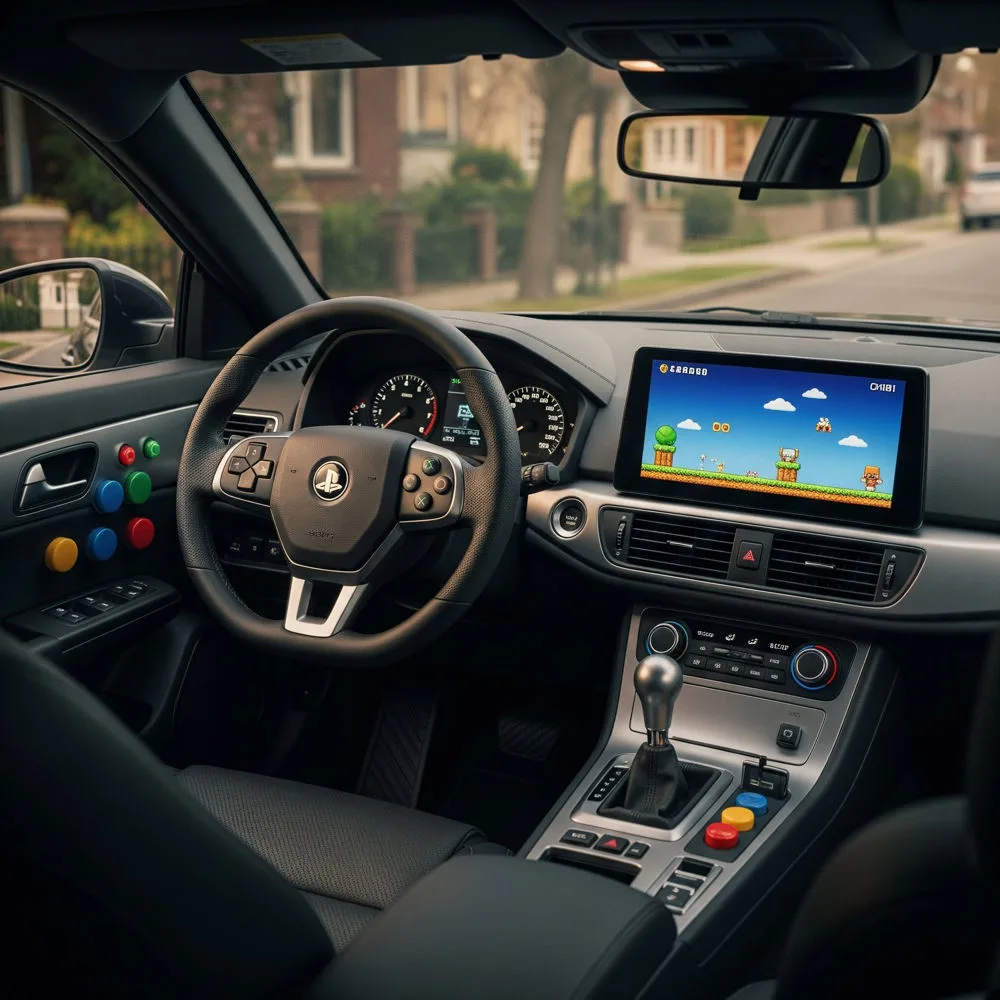The intersection of automotive passion and retro gaming culture has created one of the most exciting trends in car customization today. Retro gaming car interiors represent a unique fusion of nostalgic entertainment and modern automotive design, allowing enthusiasts to create mobile gaming sanctuaries that pay homage to the golden age of video games. This comprehensive guide explores everything you need to know about transforming your vehicle into the ultimate retro gaming experience.
The Rise of Retro Gaming Car Culture
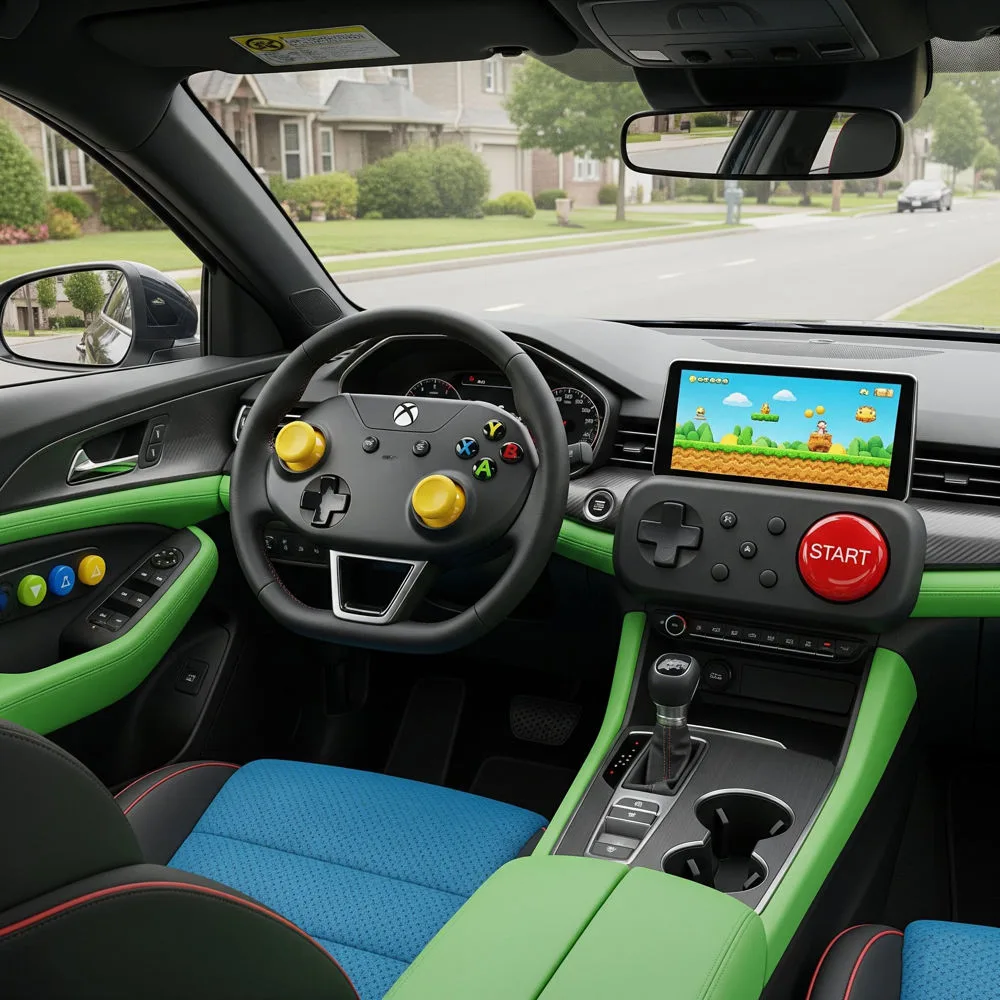
The automotive world has always been a canvas for personal expression, but the integration of retro gaming elements into car interiors represents a relatively new phenomenon that has gained tremendous momentum over the past decade. This trend emerged from the convergence of several cultural movements: the revival of retro gaming, the maker movement, and the increasing sophistication of in-car entertainment systems.
Car enthusiasts who grew up during the golden era of arcade games and home consoles are now adults with disposable income and the technical knowledge to realize their childhood dreams. They’re creating retro gaming car interiors that serve as both functional transportation and mobile tributes to gaming history. These custom installations range from subtle nods to classic games through color schemes and decorative elements to full-scale arcade setups complete with original hardware and period-authentic displays.
The appeal of retro gaming car interiors extends beyond mere nostalgia. These customizations create conversation starters, provide entertainment during long trips or waiting periods, and offer a unique way to share gaming history with younger generations. For many enthusiasts, their vehicle becomes a mobile museum of gaming culture, preserving and celebrating the artistic and technological achievements of early video game developers.
Essential Design Elements for Authentic Retro Gaming Aesthetics
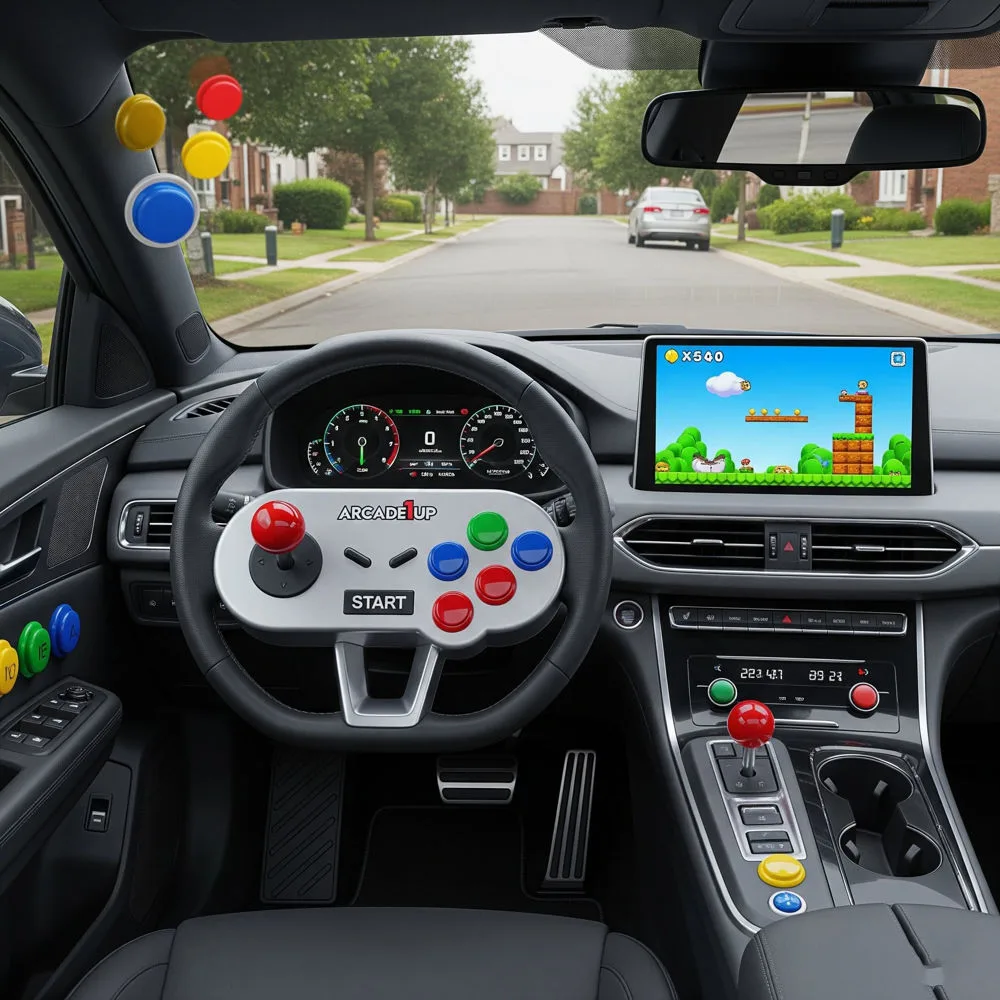
Creating compelling retro gaming car interiors requires careful attention to the visual and tactile elements that defined classic gaming culture. The color palette plays a crucial role in establishing the desired nostalgic atmosphere. Deep blues and blacks reminiscent of classic arcade cabinets, vibrant neons that echo the aesthetic of 1980s gaming culture, and the warm amber glow of early CRT monitors all contribute to an authentic retro gaming environment.
Lighting design deserves special consideration in retro gaming car interiors. LED strips can be programmed to cycle through classic gaming colors, while backlighting behind translucent panels creates the soft glow reminiscent of vintage arcade cabinets. Some enthusiasts install lighting that responds to music or engine RPM, creating a dynamic visual experience that enhances both gaming and driving.
Typography and graphic elements from classic games can be incorporated throughout the interior. Custom seat embroidery featuring iconic game characters, dashboard overlays with retro fonts, and door panels decorated with pixel art all contribute to a cohesive theme. The key is balancing these decorative elements with functionality, ensuring that the retro gaming aesthetic enhances rather than compromises the vehicle’s usability and safety.
Material selection also plays a vital role in creating authentic retro gaming car interiors. Textured plastics reminiscent of 1980s electronics, brushed metal finishes that echo arcade cabinet hardware, and vinyl upholstery in period-appropriate colors all help establish the desired aesthetic. Many enthusiasts source actual components from vintage arcade machines and gaming consoles to incorporate into their car’s interior design.
Popular Gaming Consoles and Systems for Car Integration
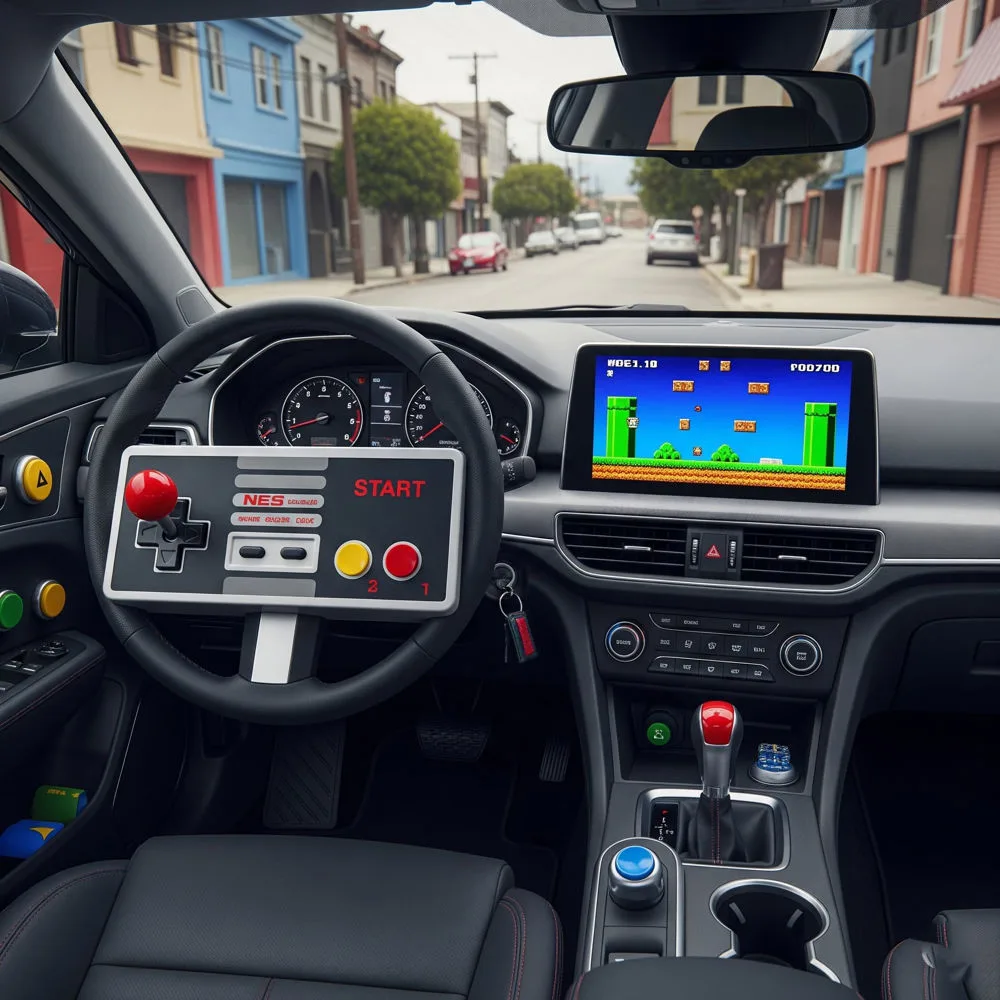
The choice of gaming hardware significantly impacts both the functionality and authenticity of retro gaming car interiors. Original Nintendo Entertainment System (NES) consoles remain the most popular choice due to their iconic status, relatively simple power requirements, and extensive game library. The compact size of the NES makes it relatively easy to integrate into vehicle interiors, while its distinctive gray and red color scheme complements many automotive design themes.
Sega Genesis systems offer another excellent option for retro gaming car interiors, particularly for enthusiasts who prefer the system’s faster-paced games and distinctive sound. The Genesis’s black casing often integrates more seamlessly into modern car interiors, while its extensive library of arcade ports provides authentic retro gaming experiences.
For those seeking the ultimate in authenticity, original arcade boards offer unparalleled gaming experiences but present significant integration challenges. These systems require custom mounting solutions, specialized power supplies, and careful cooling considerations. However, the reward is access to genuine arcade experiences that cannot be replicated through emulation.
Modern retro gaming solutions like the RetroPie system built on Raspberry Pi hardware offer practical advantages for retro gaming car interiors. These systems can emulate multiple classic consoles and arcade machines while requiring minimal power and space. They also offer greater flexibility in terms of game selection and can be easily updated or modified as needed.
Handheld gaming systems from the Game Boy era through modern retro handhelds provide another integration option. These devices can be permanently mounted in custom dashboard installations or integrated into seat-back entertainment systems, offering passengers access to classic gaming experiences without requiring complex installations.
Technical Installation Considerations and Safety Requirements
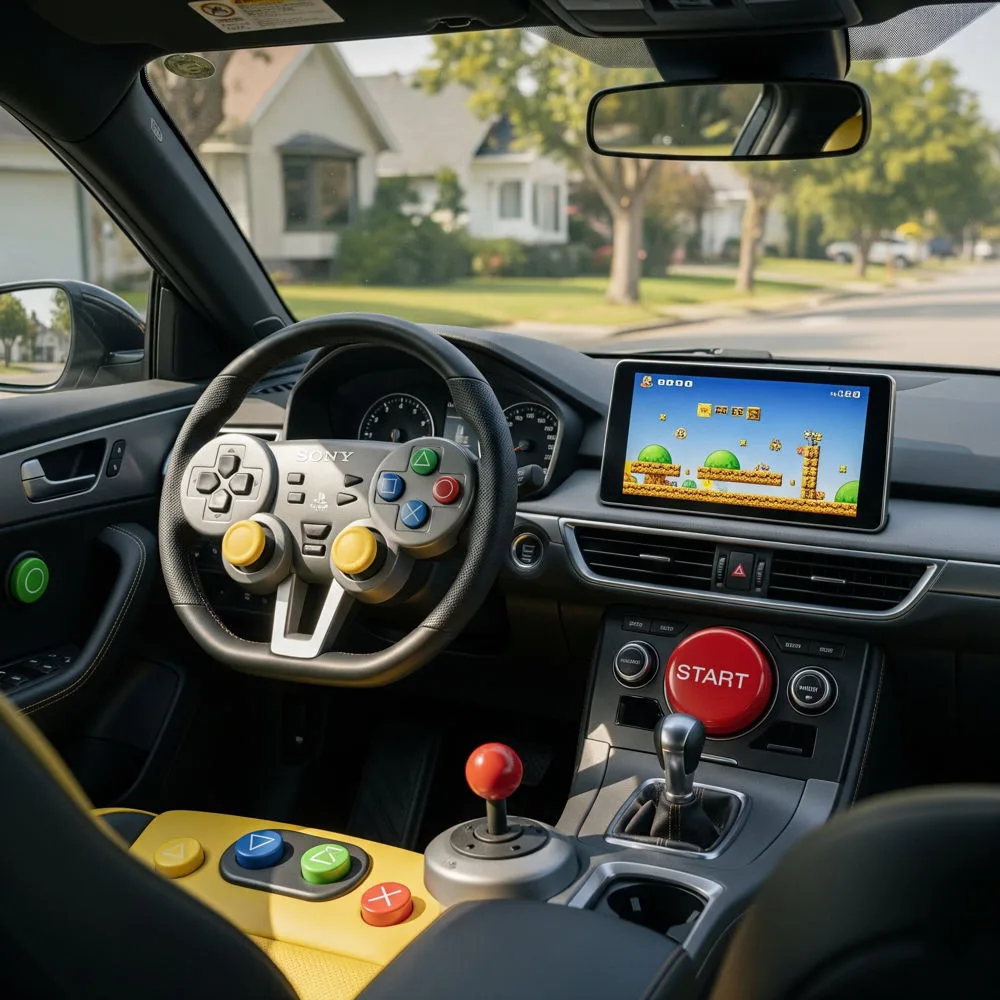
Installing retro gaming car interiors requires careful planning and technical expertise to ensure both functionality and safety. Power management represents the most critical technical challenge, as gaming systems must operate reliably from the vehicle’s 12-volt electrical system without draining the battery or interfering with essential vehicle functions.
Professional-grade DC-to-AC power inverters provide the cleanest power for sensitive gaming hardware, but they also introduce efficiency losses and heat generation that must be managed. Some enthusiasts opt for DC-powered gaming systems or custom power supplies designed specifically for automotive applications. Regardless of the chosen solution, proper fusing, grounding, and wiring practices are essential for safe operation.
Display integration requires careful consideration of viewing angles, glare reduction, and driver distraction minimization. Gaming displays should be positioned where they won’t interfere with essential driving functions or create safety hazards. Many successful retro gaming car interiors incorporate displays into headrests, center console areas, or custom-built entertainment centers that can be concealed when not in use.
Ventilation and cooling systems become critical considerations when installing heat-generating gaming hardware in enclosed vehicle interiors. Custom ventilation solutions may be required to prevent overheating, particularly in hot climates or during extended gaming sessions. Some installations incorporate temperature monitoring and automatic shutdown systems to protect valuable gaming hardware.
Audio integration presents both opportunities and challenges in retro gaming car interiors. While connecting gaming audio to the vehicle’s sound system provides the best audio experience, it requires careful planning to avoid interference with radio, navigation, and hands-free phone systems. Many installations include dedicated gaming audio systems with individual volume controls and the ability to switch between different audio sources.
Budget Planning and Cost Management Strategies
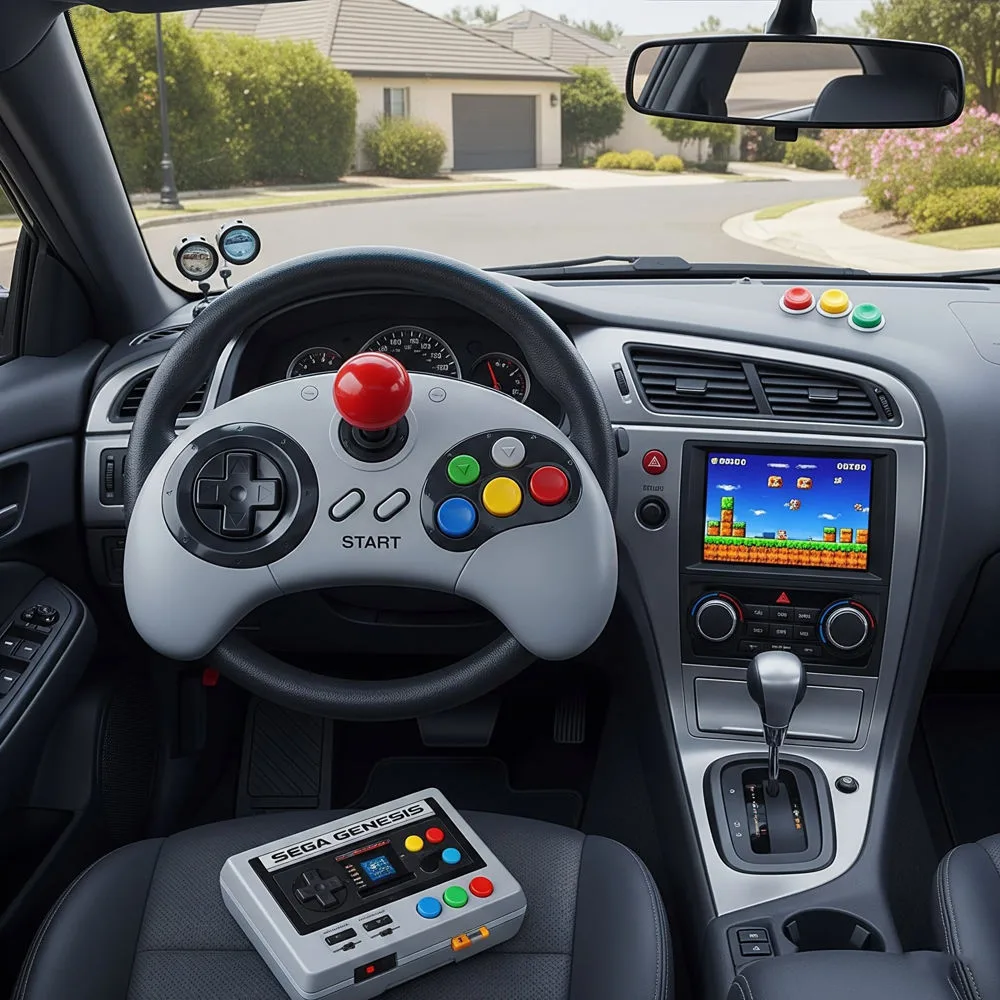
Creating impressive retro gaming car interiors doesn’t necessarily require unlimited budgets, but careful planning helps maximize results while controlling costs. Hardware costs vary dramatically depending on the chosen gaming systems and their condition. Original vintage consoles in good condition command premium prices, while reproduction systems and emulation-based solutions offer more budget-friendly alternatives.
Display costs represent another significant budget consideration. While authentic CRT monitors provide the most authentic retro gaming experience, they’re heavy, power-hungry, and increasingly expensive. Modern LCD displays with retro styling or filters can provide excellent results at lower costs while offering practical advantages in terms of weight, power consumption, and reliability.
Professional installation costs can quickly escalate, particularly for complex systems requiring custom fabrication work. Enthusiasts with technical skills can significantly reduce costs by performing their own installations, but this approach requires appropriate tools, workspace, and expertise. Many successful projects involve a hybrid approach, with enthusiasts handling basic installation work while relying on professionals for specialized tasks like custom fabrication or complex electrical work.
Component sourcing strategies can significantly impact overall project costs. Online marketplaces, retro gaming conventions, and arcade parts suppliers offer different pricing structures and selection options. Building relationships with other enthusiasts often leads to opportunities for parts trading or group purchases that reduce individual costs.
Long-term maintenance and upgrade costs should also be factored into budget planning. Vintage gaming hardware requires periodic maintenance and may need replacement parts that become increasingly expensive over time. Planning for these ongoing costs helps ensure that retro gaming car interiors remain functional and enjoyable for years to come.
Maintenance and Preservation of Vintage Gaming Hardware
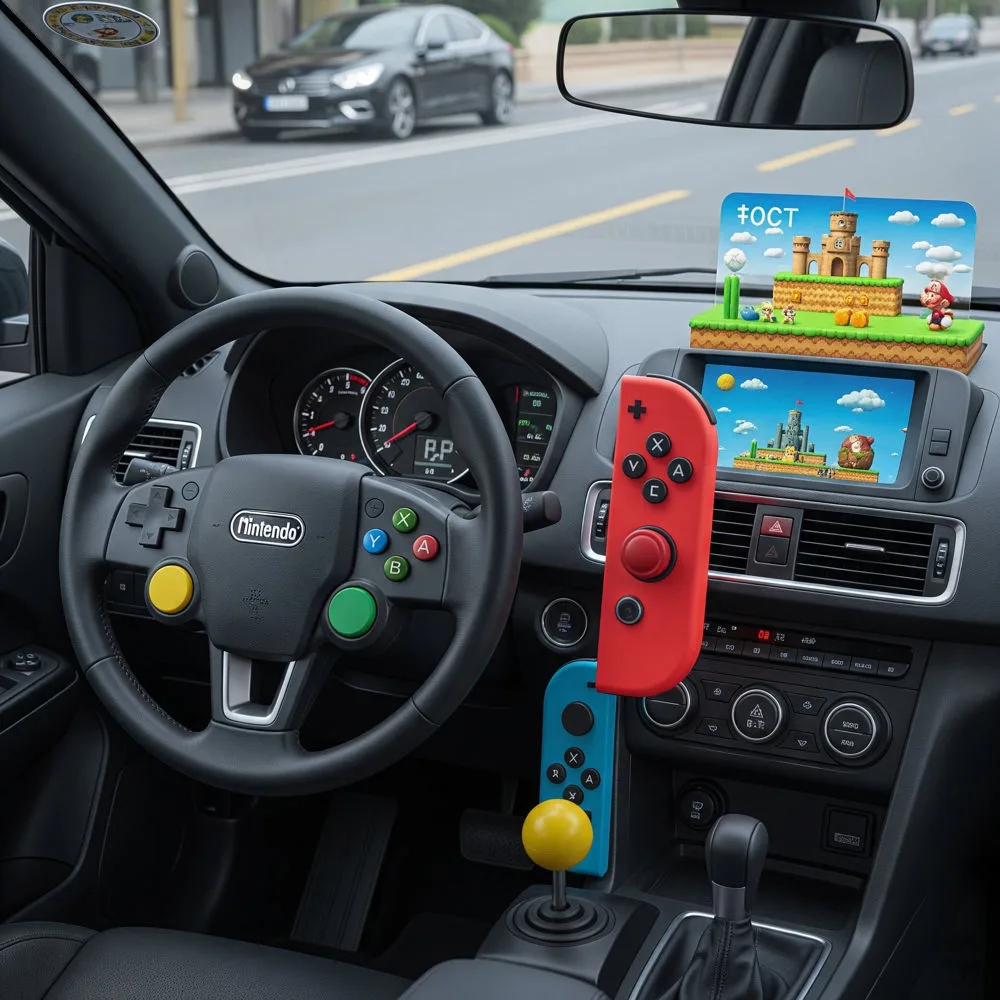
The mobile environment presents unique challenges for maintaining vintage gaming hardware in retro gaming car interiors. Temperature fluctuations, vibration, and humidity variations can all impact the longevity and reliability of classic gaming systems. Developing appropriate maintenance routines helps preserve these valuable systems while ensuring reliable operation.
Regular cleaning becomes even more critical for gaming hardware installed in vehicles, where dust, debris, and environmental contaminants are more prevalent. Establishing cleaning schedules and using appropriate cleaning materials helps prevent buildup that can cause overheating or component failure. Many enthusiasts install removable covers or protective enclosures that can be easily accessed for cleaning and maintenance.
Environmental monitoring systems can provide early warning of conditions that might damage gaming hardware. Temperature sensors, humidity monitors, and vibration detectors can alert owners to potentially harmful conditions before damage occurs. Some installations include automatic shutdown systems that protect hardware when environmental conditions exceed safe parameters.
Component replacement and repair strategies become particularly important for retro gaming car interiors, where hardware failure can be both inconvenient and expensive. Maintaining spare parts inventories, developing relationships with specialized repair services, and learning basic troubleshooting techniques all contribute to long-term system reliability.
Documentation and modification tracking help preserve the value and functionality of vintage gaming hardware. Maintaining records of modifications, repairs, and maintenance activities provides valuable information for future work and helps preserve the historical significance of vintage systems.
Creative Customization Ideas and Inspiration
The most impressive retro gaming car interiors often incorporate creative customization elements that go beyond basic hardware installation. Custom control interfaces designed to integrate seamlessly with vehicle interiors provide both functionality and aesthetic appeal. Some enthusiasts create steering wheel-mounted controls, gear shifter-integrated joysticks, or dashboard-embedded button arrays that maintain the retro gaming theme while providing convenient access to game controls.
Themed interior modifications can transform entire vehicle cabins into immersive gaming environments. Color-coordinated upholstery, custom floor mats featuring pixel art designs, and dashboard modifications that echo classic gaming hardware all contribute to cohesive themed interiors. The key is maintaining balance between thematic elements and practical functionality.
Sound system integration offers opportunities for creative customization in retro gaming car interiors. Custom audio setups can include dedicated speakers for gaming audio, sound effects triggered by vehicle operations, or music systems loaded with classic gaming soundtracks. Some installations feature audio systems that respond to gameplay, creating immersive audio experiences that extend beyond the gaming hardware itself.
Storage and organization solutions designed specifically for gaming accessories enhance both functionality and aesthetics. Custom compartments for game cartridges, controllers, and cables can be integrated into existing interior spaces or incorporated into custom-built entertainment centers. These storage solutions often feature retro styling that complements the overall gaming theme.
Interactive elements that engage passengers or onlookers add entertainment value to retro gaming car interiors. Motion-activated displays, proximity sensors that trigger sound effects, or interactive dashboard elements create engaging experiences that extend beyond active gaming. These features help showcase the installation and create memorable experiences for passengers and observers.
The Future of Retro Gaming Car Modifications
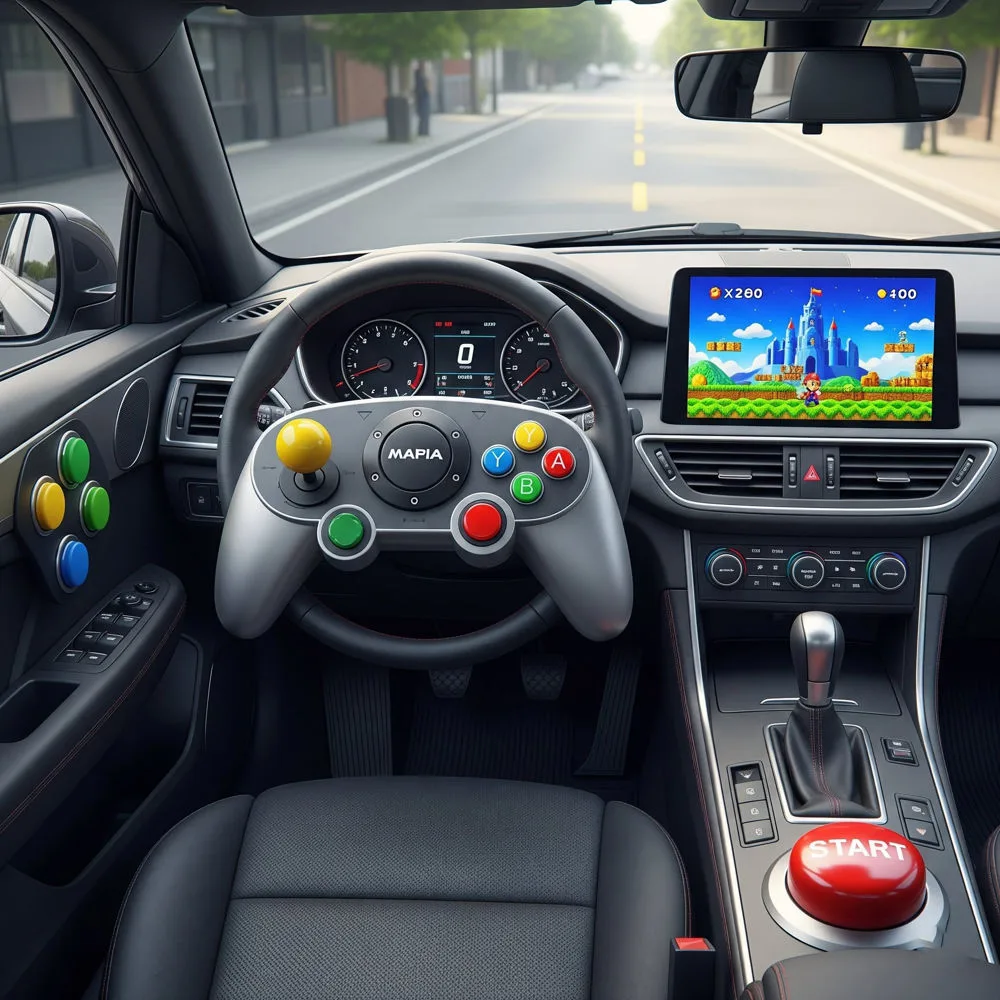
The evolution of retro gaming car interiors continues to accelerate as new technologies become available and the community of enthusiasts grows. Emerging display technologies offer new possibilities for integrating gaming visuals into vehicle interiors. Flexible OLED displays, transparent screens, and heads-up display technologies all present opportunities for innovative gaming installations that were previously impossible.
Wireless connectivity and cloud gaming services are beginning to influence retro gaming car interiors, allowing access to vast game libraries without requiring physical hardware installations. While these modern solutions offer practical advantages, they also raise questions about authenticity and the preservation of classic gaming experiences.
The maker movement and increasing availability of 3D printing technology enable more enthusiasts to create custom components and accessories for their retro gaming car interiors. This democratization of manufacturing capabilities allows for increasingly sophisticated and personalized installations while reducing costs and improving accessibility.
Virtual and augmented reality technologies may eventually influence retro gaming car interiors, potentially allowing passengers to experience classic games in new ways or overlay gaming elements onto real-world environments. While these applications remain largely theoretical, they represent the continuing evolution of gaming and automotive technologies.
Community sharing and collaboration continue to drive innovation in retro gaming car interiors. Online forums, social media groups, and dedicated communities provide platforms for sharing ideas, troubleshooting problems, and showcasing completed projects. This collaborative environment accelerates the development of new techniques and solutions while preserving and sharing knowledge within the community.
Conclusion
Retro gaming car interiors represent a unique intersection of automotive passion and gaming culture that allows enthusiasts to create truly personalized transportation experiences. These mobile gaming installations serve as both functional entertainment systems and rolling tributes to the golden age of video games, preserving classic gaming experiences for current and future generations.
The success of any retro gaming car interior project depends on careful planning, appropriate hardware selection, and attention to both aesthetic and technical details. Whether starting with a simple console installation or planning a comprehensive gaming-themed interior transformation, the key is balancing nostalgia with functionality while maintaining safety and reliability.
As the community of retro gaming car enthusiasts continues to grow and evolve, new innovations and creative solutions continue to emerge. The future promises even more exciting possibilities for integrating classic gaming experiences into modern vehicles, ensuring that the culture and artistry of early video games will continue to find new expressions and reach new audiences.
For those considering their own retro gaming car interior project, the journey offers opportunities for technical learning, creative expression, and community engagement that extend far beyond the final installation. The process of researching, planning, and building these unique automotive modifications creates lasting memories and valuable skills while producing truly one-of-a-kind vehicles that celebrate both automotive and gaming culture.
The world of retro gaming car interiors continues to evolve, driven by passionate enthusiasts who refuse to let classic gaming experiences fade into history. Their dedication ensures that future generations will have opportunities to experience the magic of early video games in innovative and engaging ways, whether in traditional arcade settings or in the unique environment of a lovingly modified vehicle interior.

